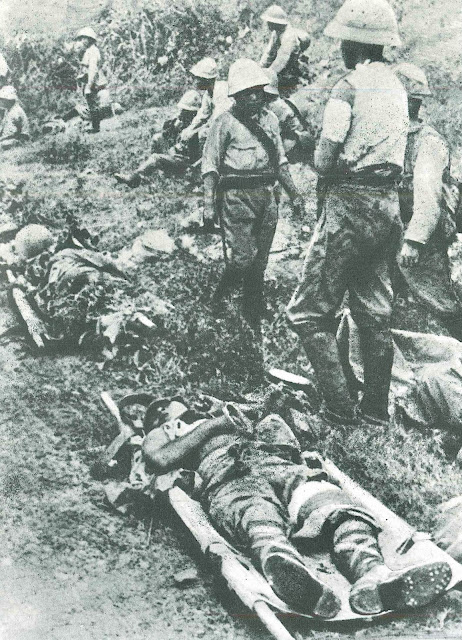A Jewish girl was murdered in Lodz Ghetto, Poland, during deportation in September 1942. The girl's body was tagged "54" on the body for burial in the morgue.
The Germans invaded Lodz (Lodz), Poland, on September 8, 1939, and by the time the Nazi SS invaded the city (renamed Litzmannstadt by the Germans) on October 28, the Germans had restricted Jewish financial transactions, banned holidays, seized, prohibited trade, and forced many Jews to work in camps. They established the second concentration camp for Jews after the Warsaw Ghetto.
The Germans isolated the Lodz Ghetto from the rest of the country. The fence surrounding the ghetto was guarded by German troops. Initially, it was guarded by the Volksdeutsche police and later by the Nazi Party (NSDAP). The Lodz Ghetto was part of the German military's campaign to kill Jews throughout Europe, and ghetto residents continued to die from exhaustion, lack of food, and disease.
In 1941, the Nazis established a concentration camp at Chelmno Nad Nerem, about 48 km northwest of Lodz. Prisoners were deported, sealed in the rear of gas cars, and murdered with poisonous exhaust fumes. Bodies were incinerated and buried; in the first half of 1942, some 52,304 Lodz Jews were forced onto a freight train at the Radgoszcz station and murdered at Chelmno, along with some 4,500 Roma who had been deported earlier.
Beginning in late August 1942, the Germans removed from the ghetto those who could not work, including the sick, children, and the elderly; on September 1, the Jewish police seized patients from hospitals and ordered their deportation to the train; on September 4, Rumkowski, a Jew, gave a public address to ghetto parents to hand over their resettled children He gave a speech: by September 12, 15,681 people, including 5,862 children, had been transferred from the ghetto and murdered in Chelmno.
In the winter of 1944, Polish photographer Henryk Ross hid a box full of photographs of the Lodz Holocaust from the Nazis. The Russian Red Army liberated the ghetto in mid-January 1945. After the war ended, Henryk returned home, dug up the box, photographed it, and published it, shocking the public with the horrific moment captured on camera.
【Attention while browsing】
【閲覧留意】






























